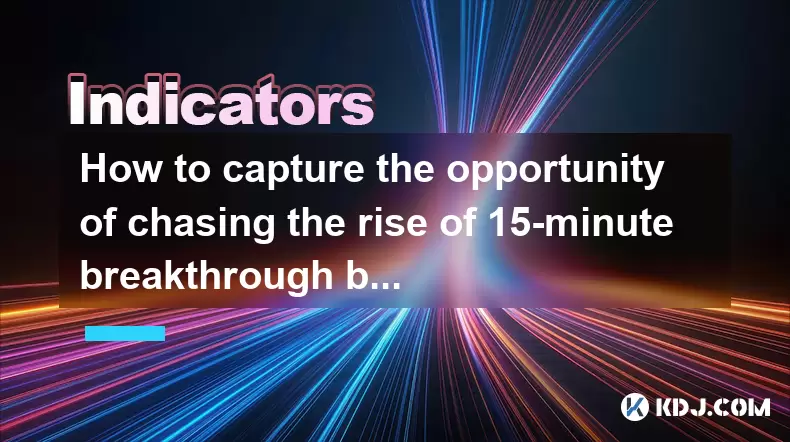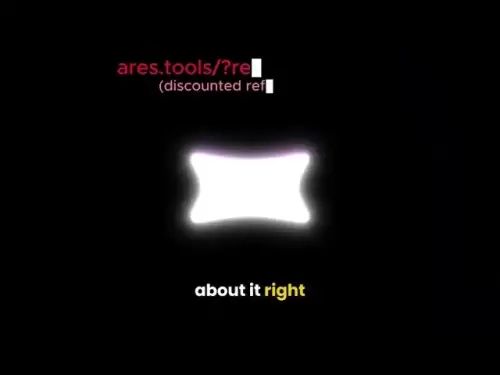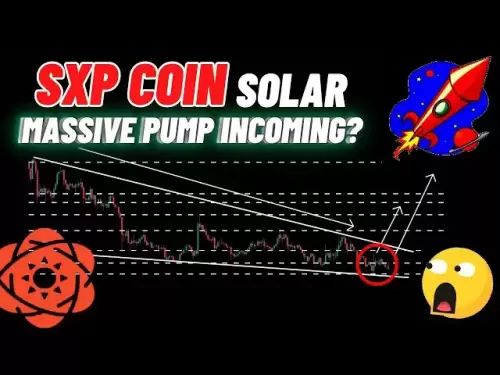-
 Bitcoin
Bitcoin $117500
2.04% -
 Ethereum
Ethereum $3759
3.02% -
 XRP
XRP $3.171
3.30% -
 Tether USDt
Tether USDt $1.000
0.03% -
 BNB
BNB $782.4
2.52% -
 Solana
Solana $187.2
5.62% -
 USDC
USDC $0.0000
0.02% -
 Dogecoin
Dogecoin $0.2380
5.26% -
 TRON
TRON $0.3175
1.07% -
 Cardano
Cardano $0.8227
4.03% -
 Hyperliquid
Hyperliquid $44.50
5.44% -
 Sui
Sui $4.020
10.07% -
 Stellar
Stellar $0.4396
6.28% -
 Chainlink
Chainlink $18.32
4.55% -
 Hedera
Hedera $0.2628
10.71% -
 Bitcoin Cash
Bitcoin Cash $554.8
4.90% -
 Avalanche
Avalanche $24.20
4.60% -
 Litecoin
Litecoin $113.7
2.31% -
 Shiba Inu
Shiba Inu $0.00001413
5.99% -
 UNUS SED LEO
UNUS SED LEO $8.984
0.11% -
 Toncoin
Toncoin $3.326
7.22% -
 Ethena USDe
Ethena USDe $1.001
0.00% -
 Uniswap
Uniswap $10.49
4.56% -
 Polkadot
Polkadot $4.092
4.02% -
 Monero
Monero $326.6
1.30% -
 Dai
Dai $1.000
-0.01% -
 Bitget Token
Bitget Token $4.570
2.49% -
 Pepe
Pepe $0.00001267
5.10% -
 Aave
Aave $297.3
3.10% -
 Cronos
Cronos $0.1344
4.10%
How to capture the opportunity of chasing the rise of 15-minute breakthrough box + 5-minute MACD bar accelerated?
The 15-minute breakout box strategy combined with 5-minute MACD histogram acceleration helps traders time bullish entries with higher precision and momentum confirmation.
Jul 25, 2025 at 04:28 am

Understanding the 15-Minute Breakout Box Strategy
Traders in the cryptocurrency market often rely on price action and technical indicators to identify high-probability entry points. One such method is the 15-minute breakout box strategy, which focuses on identifying consolidation zones on the 15-minute chart. A breakout box forms when price moves within a narrow range for several consecutive candles, indicating indecision or accumulation. The key is to wait for a decisive breakout above resistance or below support with strong volume. This breakout suggests that one side—bulls or bears—has taken control. In the context of chasing a rise, the focus is on bullish breakouts where price closes above the upper boundary of the box.
To draw the breakout box, locate at least 4–6 candles that trade within a defined high-low range. Connect the highest high and lowest low of this range to form a horizontal box. It’s critical that the breakout candle closes fully outside the box and is accompanied by increased trading volume. False breakouts are common in crypto due to volatility, so confirmation is essential. Waiting for the next candle to sustain the move beyond the box increases reliability. This setup provides a clear entry trigger, stop-loss level (just below the box), and initial price target (equal to the height of the box projected upward).
Integrating the 5-Minute MACD Histogram Acceleration
While the 15-minute chart sets the stage, the 5-minute MACD histogram serves as a timing filter to refine entries. The MACD (Moving Average Convergence Divergence) consists of the MACD line, signal line, and histogram. The histogram represents the difference between the two lines. When the histogram bars grow taller in the positive zone, it indicates accelerating bullish momentum. This acceleration is crucial because it confirms that buying pressure is intensifying, not just maintaining.
To apply this, switch to the 5-minute chart once a 15-minute breakout is detected. Look for the MACD histogram to transition from shrinking bars to expanding green bars above the zero line. This shift signals that the short-term momentum is aligning with the higher timeframe breakout. It’s not enough for the MACD to be positive—acceleration must be visible. Traders should avoid entries if the histogram is flat or declining, even if price is rising, as this may indicate weakening momentum.
The MACD settings typically used are (12, 26, 9), but some traders adjust for crypto’s volatility. Ensure the indicator is applied correctly on the 5-minute chart and that the histogram crosses from negative to positive or shows clear growth from a neutral state. This confluence between the 15-minute breakout and 5-minute momentum surge increases the probability of a sustained upward move.
Step-by-Step Entry Execution
Executing a trade based on this dual-timeframe strategy requires precision. Follow these steps carefully:
- Monitor the 15-minute chart for a well-defined consolidation forming a horizontal range.
- Confirm the breakout by waiting for a full candle to close above the upper boundary.
- Switch to the 5-minute chart and locate the MACD indicator.
- Verify that the MACD histogram is showing increasing positive bars, indicating acceleration.
- Enter a long position at the close of the 5-minute candle that confirms momentum growth.
- Place a stop-loss just below the breakout box on the 15-minute chart.
- Set a take-profit level equal to the height of the breakout box added to the breakout point.
It’s essential to use limit orders to avoid slippage, especially in fast-moving crypto markets. Avoid entering on wicks or shadows; only the candle close should be considered valid. If the 5-minute MACD shows divergence—price rising but histogram shrinking—do not enter, as this may signal a trap. Always check for alignment with the broader trend on the 1-hour chart to avoid counter-trend trades.
Managing Risk and Position Sizing
Even with a high-probability setup, risk management remains critical. The cryptocurrency market is prone to sudden reversals and liquidation cascades. The stop-loss should be placed at a level that invalidates the breakout thesis—if price returns into the box, the breakout has failed. The distance between entry and stop-loss determines position size. Use a fixed percentage of your trading capital per trade, typically 1% to 2%, to preserve capital over time.
For example, if your account is $10,000 and you risk 1%, that’s $100 per trade. If the stop-loss is 0.5% below entry, calculate the number of units to buy so that a 0.5% drop equals $100 loss. This prevents emotional decisions during drawdowns. Also, consider using trailing stops once the trade moves in your favor, locking in profits as momentum continues. Avoid moving the stop-loss further away—only adjust it tighter or upward.
Monitoring Exit Signals and Partial Profit-Taking
Knowing when to exit is as important as knowing when to enter. The initial profit target is derived from the breakout box height. Once reached, consider taking partial profits—50% to 70% of the position—while letting the remainder run with a trailing stop. Monitor the 5-minute MACD for signs of deceleration: shrinking histogram bars, crossover of the signal line, or a drop below zero. These are early warnings of momentum loss.
Additionally, watch for rejection at key resistance levels, such as previous swing highs or Fibonacci extensions. If the next 15-minute candle shows a long upper wick or closes back inside the breakout box, it may signal exhaustion. Close the remaining position if the MACD histogram turns negative and price fails to make new highs. Avoid holding solely based on hope—stick to the signals.
Frequently Asked Questions
What if the 5-minute MACD shows acceleration but the 15-minute breakout candle has a long upper wick?
A long upper wick indicates rejection at the top, suggesting strong selling pressure. Even with MACD acceleration, this is a warning sign. Wait for the next 15-minute candle to close cleanly above the box without a wick. Premature entries often lead to stop-outs.
Can this strategy be applied to altcoins, or is it only suitable for Bitcoin?
This strategy works across major altcoins like Ethereum, BNB, and Solana, provided they have sufficient liquidity and volume. Low-cap altcoins may exhibit erratic price action and fakeouts, making the breakout box less reliable. Always verify volume during the breakout.
How do I adjust the MACD settings for faster signals in crypto?
Some traders use settings like (8, 21, 5) to make MACD more responsive. However, this increases false signals. Test adjustments in a demo account. The standard (12, 26, 9) remains effective when combined with the 15-minute breakout context.
Should I use leverage when trading this setup?
Leverage amplifies both gains and losses. Given the volatility of crypto breakouts, using high leverage can trigger stop-losses during normal fluctuations. If using leverage, keep it below 3x to 5x and ensure your stop-loss distance accounts for market noise.
Disclaimer:info@kdj.com
The information provided is not trading advice. kdj.com does not assume any responsibility for any investments made based on the information provided in this article. Cryptocurrencies are highly volatile and it is highly recommended that you invest with caution after thorough research!
If you believe that the content used on this website infringes your copyright, please contact us immediately (info@kdj.com) and we will delete it promptly.
- Pi Coin, Wallet Features, and Coinbase: What's the Buzz?
- 2025-07-26 18:30:12
- Worldcoin, Punisher Coin, and the Meme Coin Mania: What's the Haps?
- 2025-07-26 18:30:12
- Conviction, Justice System, and Murders: A Look at Recent Cases and Shifting Perspectives
- 2025-07-26 18:50:11
- Shiba Inu, Remittix, and the Market Surge: What's the Hype?
- 2025-07-26 19:10:12
- Cardano Price, ADA Holders, and Leadership Criticism: What's the Real Deal?
- 2025-07-26 19:30:12
- MicroStrategy, Bitcoin, and XRP Whale Dumps: What's the Deal?
- 2025-07-26 19:30:12
Related knowledge

What does it mean that the rebound is blocked after the moving average is arranged in a short position for the first time?
Jul 26,2025 at 10:51am
Understanding the Short-Term Moving Average ConfigurationWhen traders refer to a 'short position arrangement' in moving averages, they are describing ...

What does it mean that the parabolic indicator and the price break through the previous high at the same time?
Jul 26,2025 at 07:22pm
Understanding the Parabolic Indicator (SAR)The Parabolic SAR (Stop and Reverse) is a technical analysis tool developed by J. Welles Wilder to identify...

What does it mean when the price rises along the 5-day moving average for five consecutive days?
Jul 26,2025 at 08:07am
Understanding the 5-Day Moving Average in Cryptocurrency TradingThe 5-day moving average (5DMA) is a widely used technical indicator in cryptocurrency...

What does it mean when ADX breaks through 25 and +DI continues to rise?
Jul 26,2025 at 07:00pm
Understanding the ADX Indicator and Its ThresholdsThe Average Directional Index (ADX) is a technical analysis tool used to measure the strength of a t...

What does it mean when the price breaks through the 60-day moving average with a large volume but shrinks the next day?
Jul 26,2025 at 06:01am
Understanding the 60-Day Moving Average in Cryptocurrency TradingThe 60-day moving average (60DMA) is a widely used technical indicator in the cryptoc...

What does the sudden rise of ADX in DMI accompanied by +DI crossing -DI indicate?
Jul 26,2025 at 01:21pm
Understanding the DMI and Its Core ComponentsThe Directional Movement Index (DMI) is a technical analysis tool used to determine the presence and stre...

What does it mean that the rebound is blocked after the moving average is arranged in a short position for the first time?
Jul 26,2025 at 10:51am
Understanding the Short-Term Moving Average ConfigurationWhen traders refer to a 'short position arrangement' in moving averages, they are describing ...

What does it mean that the parabolic indicator and the price break through the previous high at the same time?
Jul 26,2025 at 07:22pm
Understanding the Parabolic Indicator (SAR)The Parabolic SAR (Stop and Reverse) is a technical analysis tool developed by J. Welles Wilder to identify...

What does it mean when the price rises along the 5-day moving average for five consecutive days?
Jul 26,2025 at 08:07am
Understanding the 5-Day Moving Average in Cryptocurrency TradingThe 5-day moving average (5DMA) is a widely used technical indicator in cryptocurrency...

What does it mean when ADX breaks through 25 and +DI continues to rise?
Jul 26,2025 at 07:00pm
Understanding the ADX Indicator and Its ThresholdsThe Average Directional Index (ADX) is a technical analysis tool used to measure the strength of a t...

What does it mean when the price breaks through the 60-day moving average with a large volume but shrinks the next day?
Jul 26,2025 at 06:01am
Understanding the 60-Day Moving Average in Cryptocurrency TradingThe 60-day moving average (60DMA) is a widely used technical indicator in the cryptoc...

What does the sudden rise of ADX in DMI accompanied by +DI crossing -DI indicate?
Jul 26,2025 at 01:21pm
Understanding the DMI and Its Core ComponentsThe Directional Movement Index (DMI) is a technical analysis tool used to determine the presence and stre...
See all articles

























































































